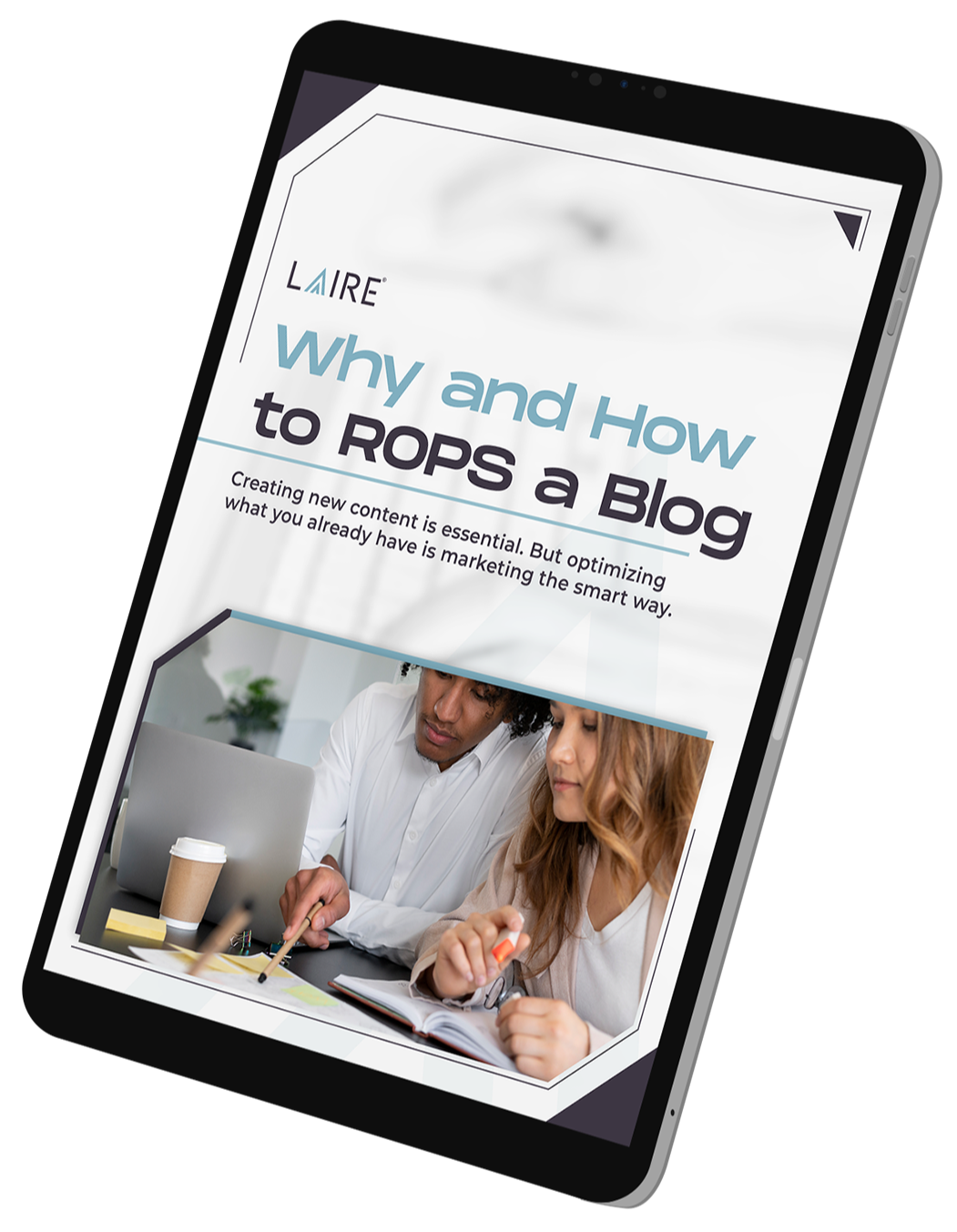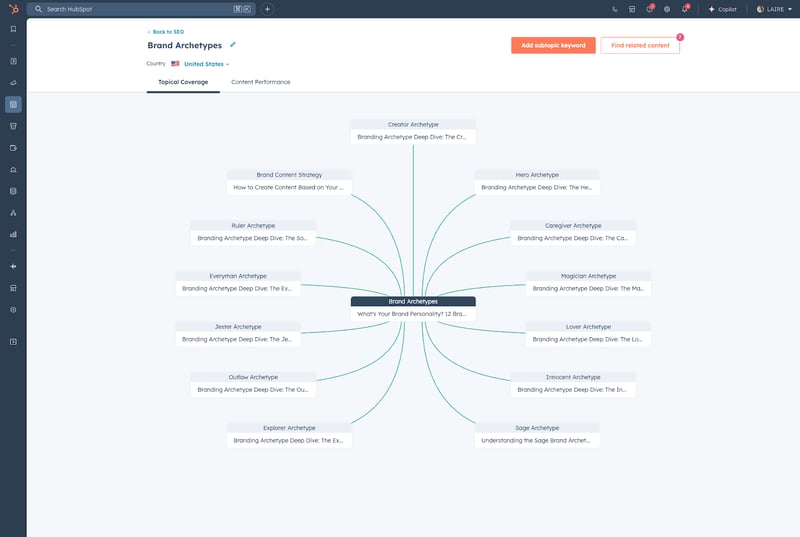TABLE OF CONTENTS
The Rise of AI Overviews | Challenge: Visibility Without Clicks | 9 AI Visibility Best Practices |
What This Means for You
The search engine optimization (SEO) landscape has never been more volatile … or more exciting! In 2025, we’ve officially entered the AI-first era of search. Gone are the days of predictable blue links and static search results.
Now, large language models (LLMs) are reshaping how search results are displayed and consumed. At the forefront of this shift is Google’s AI Overviews (AIOs), which have fundamentally changed how users find and engage with content.
But as marketers, we can’t afford to be discouraged. Instead, we must adapt.
This blog explores the best practices for maintaining visibility and driving meaningful results in the new world of AI-driven search. Let’s get into it.
The Rise of AI Overviews and the Decline of Traditional Clicks
Conducted by SEO experts Kevin Indig and Eric van Buskirk, a first-of-its-kind user experience (UX) study on AI Overviews reveals just how disruptive these results are:
- Organic traffic drops drastically when AIOs appear. Desktop click-through rates (CTRs) can fall by two-thirds, and mobile by nearly half.
- 70% of users don’t read beyond the first third of the AI Overview, emphasizing the need to earn trust and attention immediately.
- User behavior varies by age and query type: Younger users trust AI responses and social proof, while older audiences still favor traditional results. High-stakes searches (finance, health) drive deeper investigation.
The good news? 80% of users still scroll beyond the AIO, meaning first-page rankings (organic or paid) still matter.
The bad news? Even when cited in the AIO, traffic loss is inevitable. A mention doesn't guarantee a click.
The SEO Challenge: Visibility Without Clicks
With LLMs synthesizing and delivering answers directly in search engine results pages (SERPs), attribution is murky.
Although AI Overviews contribute to your overall Google Search Console traffic data, there are no dedicated reports or filters to isolate performance within the AI Overview feature. This means you can’t view specific metrics, like impressions, clicks, or average position, exclusively for AI Overviews. Many other monitoring tools fall short as well.
Meanwhile, traffic sources are fragmenting, with platforms like Reddit, YouTube, and Quora capturing residual attention.
At the same time, SEO budgets are under fire. Stakeholders are questioning the value of ranking if clicks aren’t guaranteed. But the truth is: In today’s AI-driven landscape, it’s no longer just about traffic.
9 AI Visibility Best Practices You Can Start Today
If success isn’t just about traffic, what’s it about? How can you know whether your digital marketing efforts are moving the needle?
Getting found online in 2025 boils down to three things: presence, authority, and influence. To stay visible and competitive in this evolving AI-focused landscape, apply these strategic best practices.
1. Double Down on SEO Fundamentals
Even in an AI-first world, traditional SEO best practices still form the backbone of discoverability. LLMs pull content from well-structured, optimized sources, meaning technical SEO and quality content are more essential than ever. Keep these tips top of mind:
- Metadata matters: Ensure titles, meta descriptions, and alt text are clear, keyword-rich, and accurately describe the content.
- Schema markup: Use structured data to label your content (e.g., FAQs, products, authors), helping both search engines and LLMs interpret and display it.
- Fast, accessible websites: Page speed, mobile-friendliness, and clean site architecture directly affect whether your content is crawled, understood, and ranked.
2. Optimize for Conversational, Contextual Queries
People search the way they speak, and LLMs mirror that behavior. Content structured around natural, intent-driven questions stands a much better chance of being cited in AI Overviews and other zero-click features.
Use this approach to align your content with how users — and LLMs — ask and interpret questions:
- Include FAQ sections and question-based headings (H2s, H3s, etc.) to make content scannable and AI-friendly.
- Think like your audience: What are they really trying to solve?
- Reframe blog titles and headers around queries like the example below.
 3. Structure Content for AI Comprehension
3. Structure Content for AI Comprehension
Clarity and formatting aren’t just UX best practices; they’re SEO gold in the AI era. LLMs parse clean content structure more easily, increasing its chances of being pulled into SERPs or AI-generated responses. Here are some quick wins:
- Keep paragraphs short, 2 to 3 sentences max.
- Use bulleted and numbered lists for processes, tips, or comparisons.
- Include a TL;DR or summary at the beginning of longer articles.
- Optimize content for snippet formats (e.g., definitions, pros/cons, steps).
4. Leverage Structured Data
Structured data is your behind-the-scenes SEO superpower. Schema markup tells Google and LLMs exactly what your content is, making it easier to be featured in snippets, AIOs, or voice search results. You can implement schema markup for:
- FAQs
- Reviews and ratings
- Products or services
- Articles and blog posts
- Author information
Structured data helps you compete in a fragmented, AI-driven SERP by increasing content visibility across multiple surfaces.
5. Refresh Evergreen Content Regularly
Old content gets ignored by AI and users alike unless it’s updated consistently. Evergreen blogs that once drove steady traffic may now underperform if they lack current context or relevancy. Here’s how to help mitigate that:
- Update key stats, screenshots, and tools to reflect the current year (e.g., HubSpot 2025 features).
- Rewrite intros, conclusions, and examples to reflect the latest trends.
- Add fresh author insights, quotes, or client success stories to keep content credible and timely.
- Republishing evergreen content with a new date can signal freshness to search engines and improve rankings.
Don’t Let Great Content Go to Waste
Learn how to turn your existing content into a powerful engine for search visibility, traffic, and lead generation without starting from scratch.

6. Demonstrate E-E-A-T: Experience, Expertise, Authority, Trust
Google and LLMs both prioritize content from credible, experienced sources. Proving your authority isn’t optional but critical to ranking, visibility, and user trust. Try these tips to boost your website’s E-E-A-T signals and make your brand more trustworthy in the eyes of readers — and to AI:
- Include author bios with credentials, and link to professional profiles like LinkedIn.
- Display client logos, awards, testimonials, and case studies.
- Share first-hand experience, such as “Here’s how our team used HubSpot workflows to cut client lead response time by 40%.”
7. Build Topic Clusters and Smart Interlinking
Organizing your content into structured, interlinked clusters improves discoverability and LLM comprehension. It also establishes topical authority, making your site a go-to resource on key themes. Here’s a how-to overview:
- Start with a pillar page on a core topic (e.g., What Is Inbound Marketing?).
- Create related cluster content (e.g., “Lead Gen Tactics,” “Aligning Inbound With Paid Media,” etc.).
- Interlink all posts using descriptive anchor text (e.g., “inbound lead generation strategies” instead of “click here”).
This content architecture makes it easier for search engines to crawl your site and understand the relationships between your topics.
Here’s another example of topic clustering using HubSpot’s native SEO Topics tool:

8. Create Prompt-Optimized & AI-Centric Content
Want your content to be used in AI Overviews or even in response to user prompts on ChatGPT or Perplexity? Do this:
- Publish content that mirrors how prompts are written, such as “10 ChatGPT Prompts to Improve Your Inbound Strategy” or “How to Build a HubSpot Workflow With These 5 AI Prompts.”
- Create templates, checklists, and tools that solve practical problems quickly. These types of assets are highly shareable, often referenced in community forums, and likely to be ingested by AI models.
The better your content answers real-world queries, the more likely it is to be surfaced across AI-powered platforms.
9. Embrace Video and Community Content
LLMs can now process and summarize video content, and users increasingly turn to YouTube, Reddit, and forums for authentic insights. These secondary platforms are grabbing a bigger share of SERP real estate and user attention.
Being part of the conversation, whether in a blog, video, or subreddit, is key to modern visibility. Here’s how to get noticed:
- Embed short-form videos into top-performing blogs to increase dwell time and engagement.
- Post consistently on platforms like Reddit, Quora, and industry-specific forums, where LLMs often pull community-sourced answers.
- Repurpose your long-form content into Q&A shorts, how-to reels, or LinkedIn carousels that feed multiple distribution channels.
What This Means for You
If your traffic is down but rankings are up, you’re not alone. We’ve seen it firsthand with our clients and even our own website, which we illustrate below.
To assess the relationship between increasing SERP features and decreasing organic traffic on the LAIRE website, we mapped out both data points in one graph, and the correlation is undeniable:
- As SERP features rose, organic traffic fell.
- Our content is still showing up, but clicks are happening later in the funnel.
- Those who do click are more qualified, informed, and ready to act.
Again, the goal isn't just traffic anymore. It's visibility, influence, and trust at every stage of the user journey. That’s how you become the answer that AI highlights.

Reclaim Your Spot in the SERP Spotlight
The search game has changed, but it's far from over. SEO in 2025 is about more than rankings and clicks. It’s about earning a seat at the AI table, providing content that informs, educates, and gets cited by the tools shaping today’s search experience.
Want to future-proof your strategy? Our guide, “AI-Powered Storytelling for the Data-Driven Marketer,” is another great tool to add to your arsenal. Download your copy today.



